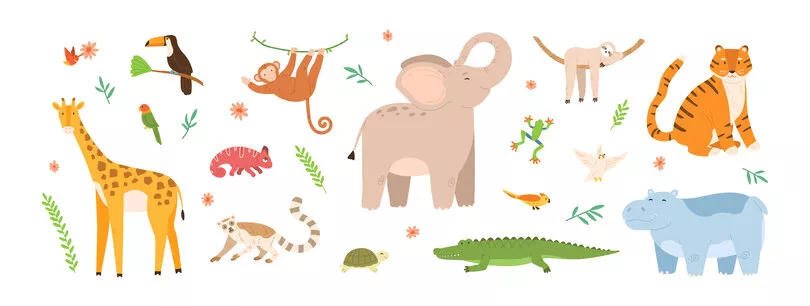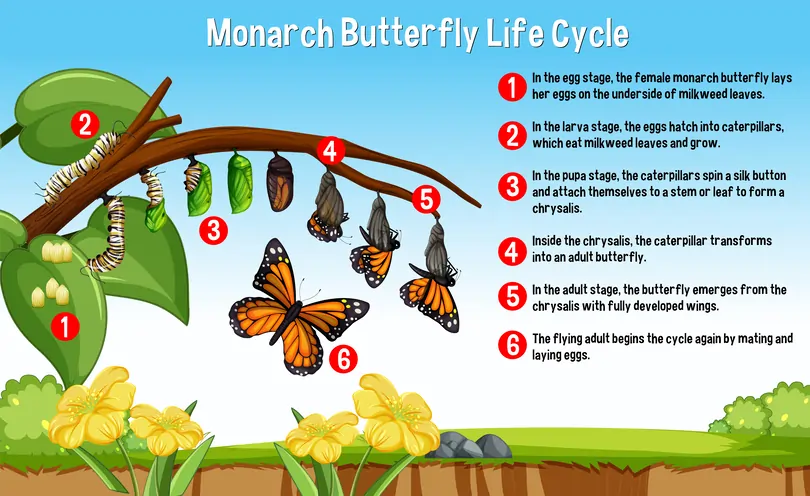Botanical secrets: 5 fascinating plant facts that'll leave you in awe

Ever heard of the carnivorous plants that eat insects? How about plants that wear their moods on their leaves? While they’re all around us, the world of plants is a whole lot more interesting than one might think!
Here are 5 mindblowing plant facts that will leave you in awe of the natural world.
So, ready to have your mind bloomed?
#1 The oldest living tree
Do you know, the oldest living tree is approximately 4,853 years old!
Native to the California-Nevada border, the Great Basin Bristlecone Pine tree, known as Methuselah, is one of the oldest known living organisms on Earth.
The hardy bristlecone pine is well adapted to its harsh environment, growing slowly and withstanding extreme temperatures, high winds, and poor soil conditions.
This species is known for its ability to live for thousands of years, with some specimens estimated to be over 5,000 years old.
Methuselah and other ancient bristlecone pines are not only fascinating examples of plant life, but they also provide valuable information about the history of our planet and the impact of environmental changes over time.
#2 The chameleon plant
You guessed it, some plants can change colours!
Houttuynia cordata, also known as the Chameleon plant, is a herbaceous perennial native to Eastern Asia that has become increasingly popular as a decorative ornamental in gardens around the world. Known for its colourful foliage and its ability to change colour depending on light and season, the Chameleon plant is an absolute showstopper in flowerbeds.
That’s not all!
While its leaves are typically green with a white or yellow border, when exposed to direct sunlight or stress, they can turn shades of red, pink, or orange.
In addition to its colour-changing ability, the chameleon plant is also known for its attractive fragrant flowers and medicinal properties useful for treating a variety of ailments such as inflammation, fever, and sore throats.
#3 The carnivorous plants
If you’re ever on a jungle hike, be sure to keep an eye out for the carnivores of the botanical world.
Known for their ability to capture and digest insects, carnivorous plants are a fascinating species of flora. They can often be found in habitats across the globe, ranging from tropical rainforests to coastal sand dunes.
While at times deadly to small animals and insects, they don’t pose much of a threat to humans. Phew.
From the devious Nepenthes (Monkey Cups) that lures its prey with syrupy liquid to the Sarracenia (Pitcher Plant) that traps curious insects with its pitcher-shaped leaves, their evolved specialised trapping mechanism and enzymes enable them to thrive in nutrient-poor soil where others struggle to survive.
The most common catching mechanisms employed by carnivorous plants are snap-traps, pitfall traps and flypaper traps; while some of the famous carnivorous plants include the Venus Flytrap, Sundew, Butterworts, Sarracenia, and Hemlock.
#4 They move (kind of)
While they don’t move as animals do, plants do move for a wide variety of reasons. There are some plants, such as the sensitive plant (Mimosa pudica) and the sundew (Drosera), that can move in response to stimuli, such as touch or changes in light.
One of the most common ways that plants move is through a process known as phototropism. This is often easily observed in houseplants, where they bend and grow towards the window in hopes of getting more sunlight.
On top of that, plants also tend to change the orientation of their stems and leaves in order to maximise their exposure to sunlight. This is an essential part of a plant’s growth cycle. And through phototropism, the plant ensures that it received enough energy from the sun in order to avoid heat damage and water loss.
#5 They talk (sort of)
While they don’t chat about the weather or their favourite tv shows like we do, plants do communicate with each other.
As a means of survival, scientists have found that plants are able to send and receive signals through their roots, leaves, and even flowers. This can take place between plants of the same species, between different species, and even between plants and other organisms, such as fungi and bacteria.
For instance, when attacked by a herbivore, a plant can release chemical signals into the air that warn nearby plants of the danger. These plants, in turn, can prepare themselves for an attack by producing chemicals that make them less palatable to the herbivore.
In a similar manner, plants communicate with each other through their roots to share resources and information, such as the location of water and nutrients.
Conclusion
As you can see, there's so much more to plants than meets the eye — who knew something as simple as grass could have so many interesting facts?! So next time you go outside or visit a garden centre, take a moment to appreciate these fascinating organisms that play an essential role in our ecosystem each and every day. Enjoy your new knowledge about the wonderful world of plants!


 SG
SG  VN
VN 



















